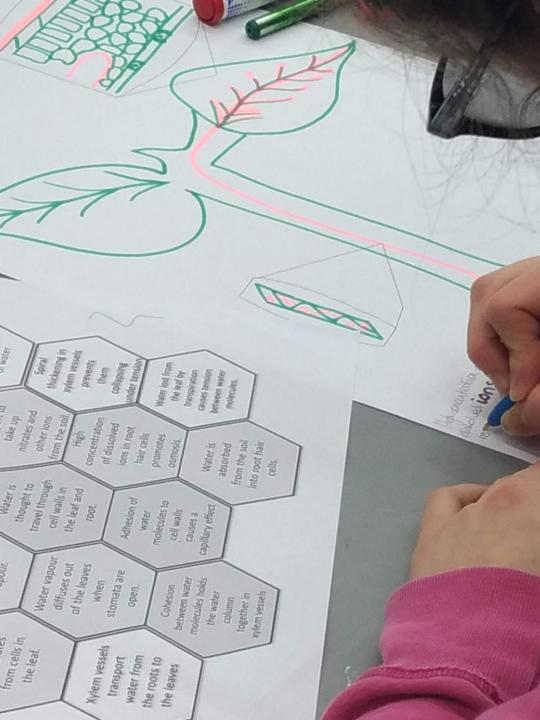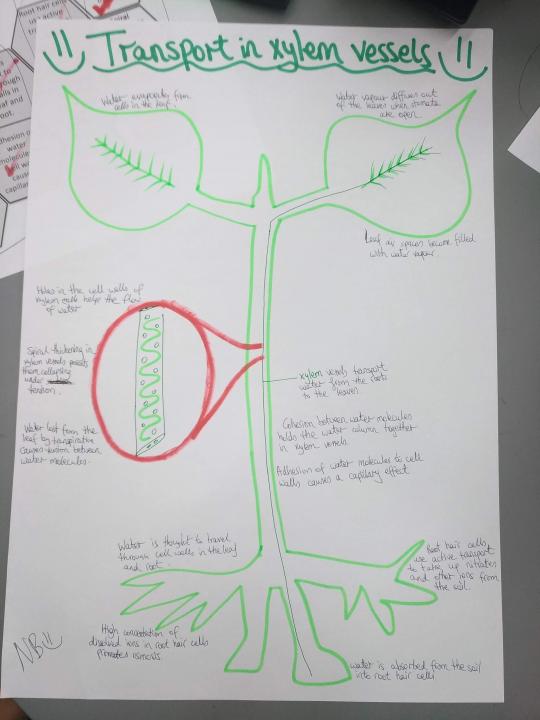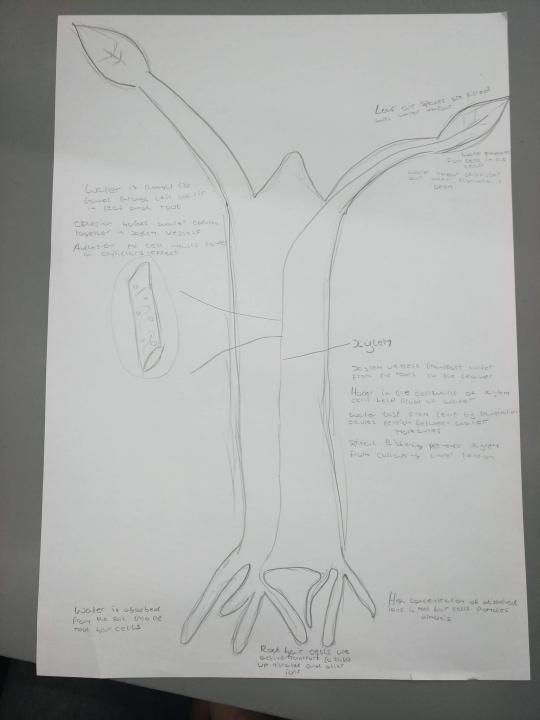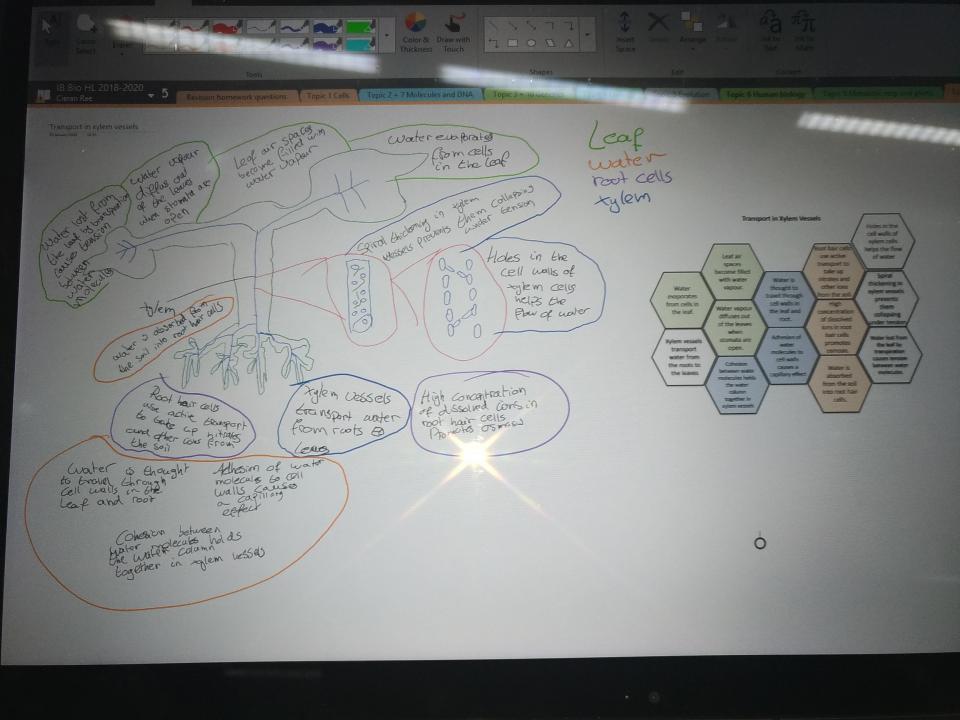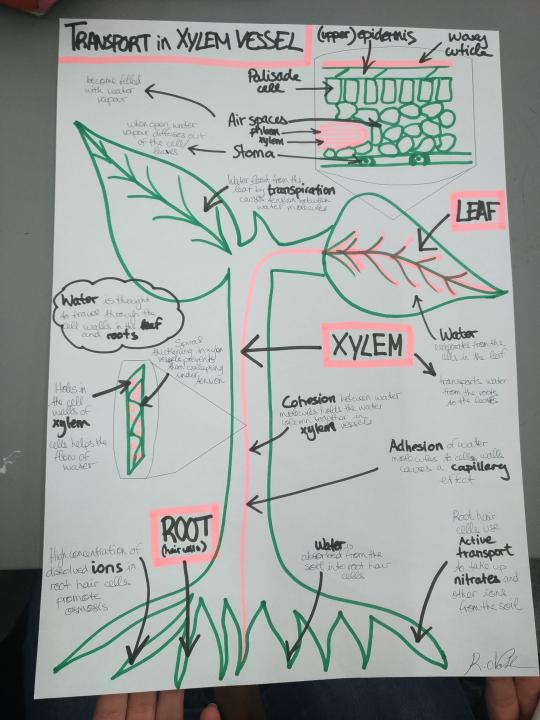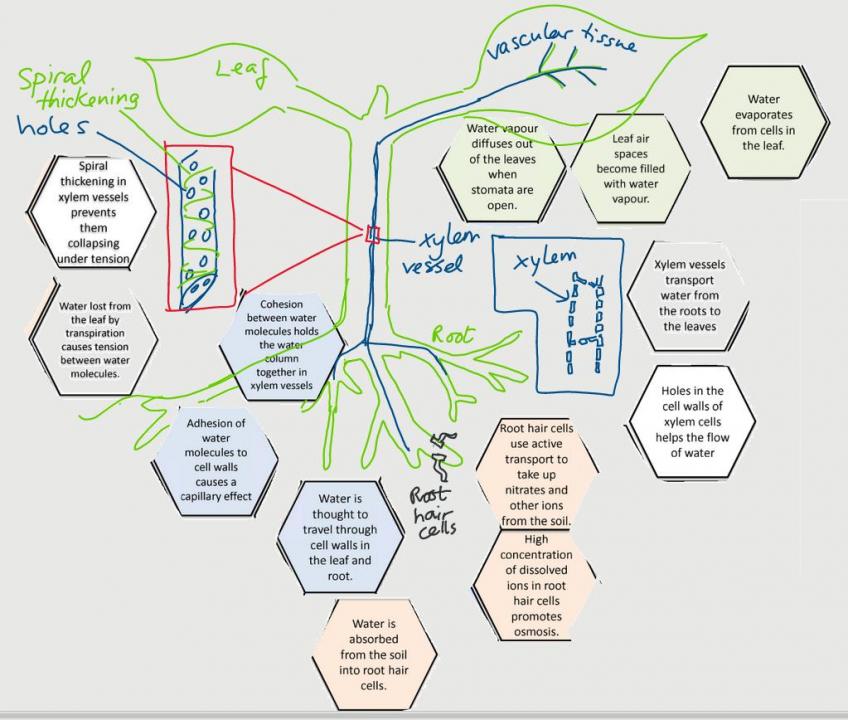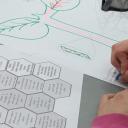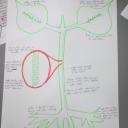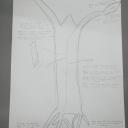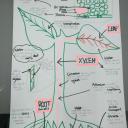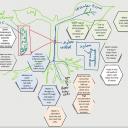Transport in xylem
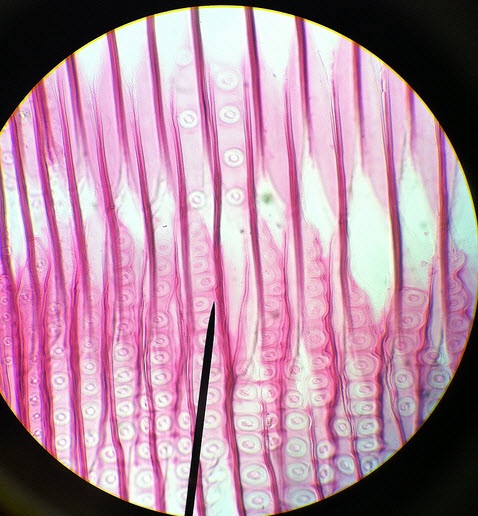 Mineral uptake in roots, & properties of water for transpiration
Mineral uptake in roots, & properties of water for transpiration
This lesson follows on from the introductory lesson on vascular tissues and explores the details of the way water travels through plants and how the xylem is adapted to facilitate this transpiration stream. The active uptake of mineral ions in the roots is also included. Students look at models of xylem cells and then make their own explanations of how the transpiration stream carries water from the roots to the leaves of a plant.
Lesson Description
Guiding Question
What does a xylem cell look like?
How does xylem prevent itself from being crushed?
Activity 1 Drawing the structure of primary xylem vessels
There are many different appearances of xylem vessels but they all have the same key features. Cell walls thickened with rings or spirals of a chemical called lignin, holes of varying shapes in the cell walls and no cytoplasm (they are dead cells).
.jpg)
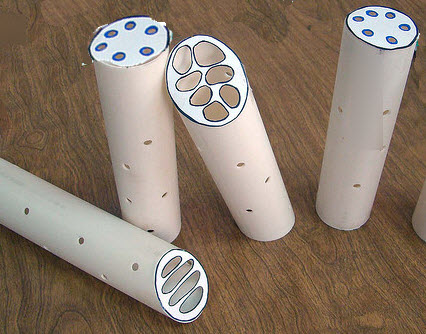
Using the images above draw a diagram to represent the structure of a primary xylem vessel.
The drawing could look something like this: ![]() video demonstration of a student drawing of xylem vessels.
video demonstration of a student drawing of xylem vessels.
(click the eye icon to show)
Activity 2: Explaining transpiration - SOLO hexagons activity
 Using
Using ![]() hexagon cards about transport in xylem make sense of the key concepts in transpiration. and learn phrases which can be used to explain the main points, using precise biological terms..
hexagon cards about transport in xylem make sense of the key concepts in transpiration. and learn phrases which can be used to explain the main points, using precise biological terms..
Cut out the hexagons and do one of the following:
- draw an outline diagram of a plant and label it using the hexagons.
- annotate each hexagon to make it's meaning more clear.
- arrange groups of hexagons which are about the same part of a plant.
- link the hexagons to each other and use these linked cards to create your own written explanations of how water flows in the transpiration stream.
Display the ![]() hexagon cards about transport in xylem by clicking the eye icon
hexagon cards about transport in xylem by clicking the eye icon
Activity 3 - Share ideas and record explanations
 Students explain their diagrams to a partner by telling the key point they chose about the nature of science. This explanations can be recorded in some way by the students as a record of their research.
Students explain their diagrams to a partner by telling the key point they chose about the nature of science. This explanations can be recorded in some way by the students as a record of their research.
Options include:
- Stick the hexagons on paper and write notes around them.
- Take photographs of the presentation.
- Video the explanation.
This gallery of photos shows some examples of student work.
Teachers notes
This lesson is important in understanding of the way transpiration stream travels through xylem vessels.
The first activity addresses the understanding of the structure of primary xylem vessels while the second activity goes one step further to help students to work out their own explanations of:
- Xylem vessels transport water from roots to leaves to replace water lost in transpiration
- The cohesive and adhesive properties of water molecules allow water transport under tension in xylem vessels and cell walls.
- The roots cells use active transport for the uptake of mineral ions (nitrates) which causes osmosis and the absorption of water.
These factors are, of course, the key elements of the transpiration stream.
There are some excellent slides of xylem here presented as a youtube lecture

 IB Docs (2) Team
IB Docs (2) Team

